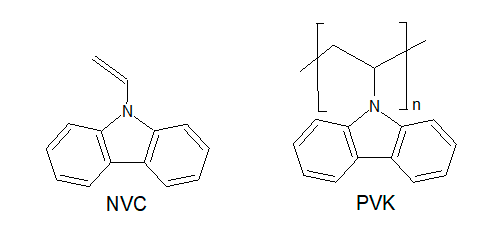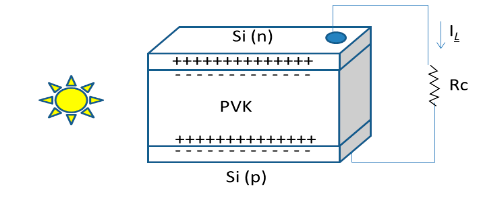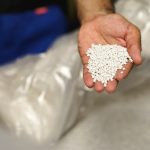Photorefractive polymers are used to prevent solar heating1. In fact, polymers like Poy(N-vinylcarbazole) (PVK) reflect near infrared light. Therefore, transparent film layer of PVK allows the pass of visible light but reflects IR one. As a result, vibration excitement of molecules caused by near IR light is minimized. These vibrations cause heating. Thus, when these vibrations are minimized, less interior heat is produced when solar light passes through. This heat shielding effect saves energy and preserves properties of food inside packing.

PVK is also a hydrophobic and conductive polymer. It is made via radical polymerization of N-vinylcarbazole (NVC). PVK has also been widely used as an electronic and optical material. For instance, in solar cells perovskites, it is used as hole transport material (HTM). As shown in figure, the PVK layer promotes charge separation at the Si-p and Si-n contacts; therefore, potential difference is established at the electrodes and current is produced. When the devise is exposed to solar light electric potential increases and more current (IL) is produced through the resistance (Rc). Solar light is converted in electrical energy.

1. A. Lanfranchi, H. Megahd, P. Lova, D. Comoretto, ACS Appl. Mater. Interfaces https://doi.org/10.1021/acsami.1c25037





